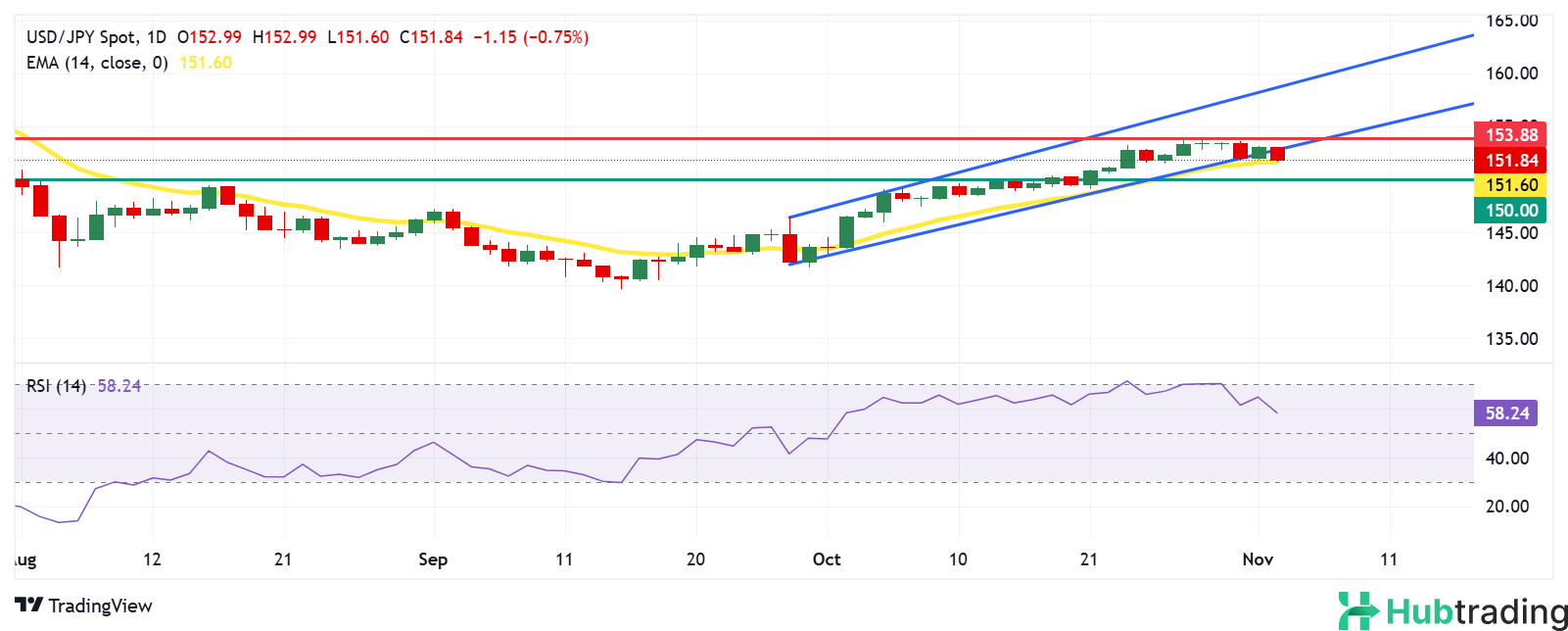- The Japanese Yen strengthens as the US Dollar weakens ahead of Tuesday's US election results.
- JPY liquidity is likely to be limited with Japanese markets closed for Sports Day on Monday.
- The US Dollar declined following weaker-than-expected Nonfarm Payrolls data, ahead of the upcoming Fed decision later this week.
The Japanese Yen (JPY) gained on Monday as the US Dollar (USD) declined, likely influenced by uncertainty around Tuesday's US presidential election. Limited JPY liquidity, due to Japanese markets being closed for Sports Day, temporarily restricts physical trading of US Treasuries.
Looking forward, the JPY may weaken amid growing political and monetary policy uncertainties following last week's parliamentary majority win by the Liberal Democratic Party (LDP) coalition, which has added ambiguity to the Bank of Japan’s (BoJ) policy direction.
In a post-meeting briefing last Thursday, BoJ Governor Kazuo Ueda indicated that decreasing economic risks in the US might allow for a potential rate hike in the future. Meanwhile, the BoJ held its policy rate steady at 0.25%, as widely expected.
The weaker-than-anticipated Nonfarm Payrolls (NFP) data for October may have contributed to the US Dollar's decline, ahead of the Federal Reserve's (Fed) rate decision this week. The CME FedWatch Tool currently signals a 99.6% probability of a quarter-point rate cut in November.
Daily Digest Market Movers: Japanese Yen rises as US Dollar weakens ahead of US election
- The latest poll shows Vice President Kamala Harris leading slightly in Nevada, North Carolina, and Wisconsin, while former President Donald Trump has a narrow lead in Arizona. Close races are underway in Michigan, Georgia, and Pennsylvania, with all outcomes within a 3.5% margin of error according to the New York Times/Siena College poll.
- US Nonfarm Payrolls increased by 12,000 in October, following a revised 223,000 gain in September (down from 254,000), missing market expectations of 113,000, while the Unemployment Rate held steady at 4.1%.
- Japan's Chief Cabinet Secretary Yoshimasa Hayashi stated on Friday that he expects the BoJ to work closely with the government to achieve stable, sustainable inflation targets.
- The au Jibun Bank Japan Manufacturing PMI declined to 49.2 in October from 49.7 in September, indicating a contraction in Japanese manufacturing output and order inflows at the start of Q4 2024.
- The US Personal Consumption Expenditures (PCE) Price Index showed a 2.7% year-over-year core inflation increase in September, with Initial Jobless Claims falling to a five-month low of 216,000 for the week ending October 25, pointing to a strong labor market.
- The BoJ held its short-term interest rate at 0.25% following its policy review, aligned with market expectations.
- According to the BoJ’s Q3 Outlook Report, the central bank plans to raise rates if economic conditions meet its forecasts, focusing on a 2% inflation target.
- US GDP grew at an annualized 2.8% rate in Q3, below 3.0% in Q2, with the ADP Employment Change report showing an October increase of 233,000 jobs, the largest since July 2023.
Technical Analysis: USD/JPY tests support around 151.80
The USD/JPY pair is trading near 151.80 on Monday. Daily chart analysis suggests the bullish momentum may be slowing as the pair has fallen below its ascending channel. However, the 14-day Relative Strength Index (RSI) remains above 50, suggesting that some bullish sentiment persists.
Resistance is located at the lower boundary of the channel at 152.90. If USD/JPY reclaims this level, it could aim for the recent high of 153.88, with further resistance at the upper channel boundary around 158.90.
Support for USD/JPY lies at the 14-day Exponential Moving Average (EMA) at 151.60, with additional support at the 150.00 psychological level.
USD/JPY: Daily Chart Analysis






